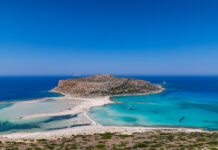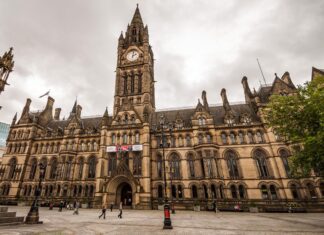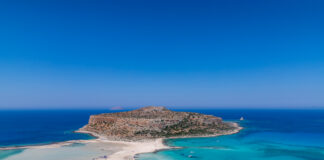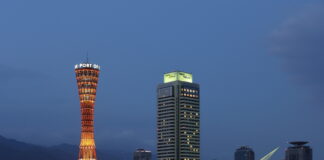Tripoli, the capital city of Libya, offers a rich and diverse culinary scene that reflects the country's cultural heritage and influences from Mediterranean, Arab, and North African cuisines. Here are some must-try dishes and food experiences in Tripoli:
- Bazin: This traditional Libyan dish is a hearty and flavorful staple. It consists of a thick porridge-like dough made from wheat flour and water, served with various toppings such as meat, vegetables, or sauces. Bazin is often enjoyed with friends and family, creating a communal dining experience.

- Brik: Brik is a popular street food in Tripoli. It is a crispy pastry with a savory mixture of eggs, tuna, parsley, and spices. The break is deep-fried to perfection, resulting in a delicious and satisfying snack.
- Shorba: Shorba is a traditional Libyan soup that comes in various forms. It is usually made with vegetables, legumes, and meat, creating a rich and flavorful broth. Enjoy a warm bowl of shorba as a comforting and nourishing dish.
- Magrood: These sweet treats delight those with a sweet tooth. Magrood is date-filled cookies that are typically flavored with spices such as cinnamon and nutmeg. Magrood, the sweet treats mentioned earlier, are commonly enjoyed during festive occasions or as a delightful afternoon snack paired with tea.
- Mint Tea: Mint tea is a popular drink in Libya, known for its refreshing and aromatic flavors. It is made by steeping green tea leaves with fresh mint leaves and sweetening them with sugar. Enjoy a cup of mint tea while experiencing the warm hospitality of Tripoli.
Culture in Tripoli: Exploring Libya's Heritage
Tripoli is a city steeped in history and culture, with a vibrant mix of old and modern influences. Here are some highlights of Tripoli's cultural scene:
- Old Town (Medina): The Old Town of Tripoli is a UNESCO World Heritage site and a treasure trove of history and culture. Explore its narrow winding streets, admire the traditional architecture, and immerse yourself in the bustling markets (souks) that offer a wide range of goods and handicrafts.
- Gurgi Mosque: Visit the Gurgi Mosque, an important religious site in Tripoli. Built-in the 7th century, it showcases exquisite Islamic architecture and intricate designs. Take a moment to appreciate the mosque's spiritual ambiance and peaceful atmosphere.
- Museum of Libya: Delve into Libya's rich history at the Museum of Libya, located in Tripoli. The museum boasts a remarkable assortment of artifacts and displays encompassing various historical periods, including ancient civilizations, Islamic art, and contemporary history.
- Arch of Marcus Aurelius: Marvel at the Arch of Marcus Aurelius, an ancient Roman monument that serves as a reminder of Tripoli's Roman past. It dates back to the 2nd century and is a testament to the city's historical significance.
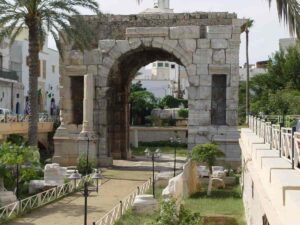
- Traditional Crafts: Tripoli is known for its skilled artisans specializing in traditional crafts such as carpet weaving, pottery, and jewelry-making. Explore the local markets to find unique handicrafts and witness the craftsmanship firsthand.
Travel Tips for Tripoli: Making the Most of Your Visit
Here are some travel tips to help you have a smooth and enjoyable trip to Tripoli:
- Safety Considerations: Before planning your trip to Tripoli, you must check the latest travel advisories and follow any safety guidelines issued by your government. Stay informed about the current situation and make informed decisions regarding your travel plans.
- Dress Modestly: Libyan society is conservative, and it is advisable to dress modestly, particularly when visiting religious sites or public places. Both men and women should avoid revealing clothing and opt for more conservative attire out of respect for the local culture.
- Language: Arabic is the official language of Libya, and while English may be spoken in some tourist areas, it is beneficial to learn a few basic Arabic phrases to help with communication. Locals appreciate the effort, and it can enhance your overall experience.
- Currency: The official currency in Libya is the Libyan Dinar (LYD). It is advisable to exchange currency at official exchange offices or banks. Credit cards are not widely accepted, so carrying enough cash for your needs is recommended.
- Local Customs: It is essential to respect local customs and traditions in Tripoli. Observe social norms, be mindful of conservative values, and seek permission before taking photographs of people or religious sites.
Interesting Facts about Tripoli
Here are some intriguing facts about Tripoli that add to its allure:
- Tripoli is one of the oldest cities in the world, with a history dating back over 2,500 years. Various civilizations, including the Phoenicians, Romans, Arabs, and Ottomans, have influenced it.
- The Old Town (Medina) of Tripoli is one of the best-preserved medieval cities in the Mediterranean region, showcasing a blend of architectural styles from different periods.
- Libya's national dish, couscous, is widely enjoyed in Tripoli. It is a staple of semolina grains steamed and served with vegetables, meat, or fish.
- Tripoli has a vibrant music scene with various traditional and modern music styles. Traditional Libyan music uses traditional instruments such as the oud and the nay.
- The Red Castle (Assaraya Alhamra) is a prominent landmark in Tripoli. This historic fortress has served as a palace and a prison and now houses a museum that showcases Libyan history and culture.
Top Places to Visit in Tripoli
- Jamahiriya Museum: Explore the rich history and cultural heritage of Libya at this museum, which exhibits a vast collection of artifacts, including ancient Roman statues, Islamic art, and historical relics.
- Red Castle (Assaraya Alhamra): Visit this imposing fortress that overlooks the city. Explore its historic halls, courtyards, and enjoy panoramic views of Tripoli.
- Archaeological Site of Sabratha: Take a day trip from Tripoli to the archaeological site of Sabratha—Marvel at the well-preserved Roman ruins, including an ancient theater, temples, and baths.
- Martyrs' Square: Located in the heart of Tripoli, this vibrant square is a popular gathering place for locals and visitors. Admire the beautiful architecture and enjoy the lively atmosphere.
- National Museum: Discover Libya's rich history and cultural heritage at the National Museum. The museum houses diverse artifacts, including ancient pottery, mosaics, and Islamic art.
- Green Square: This central square is a popular meeting place and a Tripoli activity hub. Enjoy a stroll, visit nearby shops, or relax in one of the cafes surrounding the square.
- Karamanli Mosque: Visit this historic mosque, known for its beautiful architecture and intricate tilework. Take a moment for quiet reflection in this serene place of worship.
- Mediterranean Seafront: Tripoli offers a beautiful Mediterranean coastline. Take a walk along the seafront promenade, enjoy the fresh sea breeze, and take in the scenic views of the Mediterranean Sea.

- Gurgi Mosque: Explore this historic mosque, known for its stunning architecture and serene atmosphere. Admire the intricate details and peaceful ambiance of this religious site.
- Old Town (Medina): Immerse yourself in the bustling streets of Tripoli's Old Town. Immerse yourself in the bustling markets, admire the intricate traditional architecture, and absorb the vibrant atmosphere of this UNESCO World Heritage site.
Tripoli offers a captivating blend of history, culture, and culinary delights. From exploring ancient ruins to savoring traditional Libyan dishes, the city offers much for travelers seeking an enriching and memorable experience.



